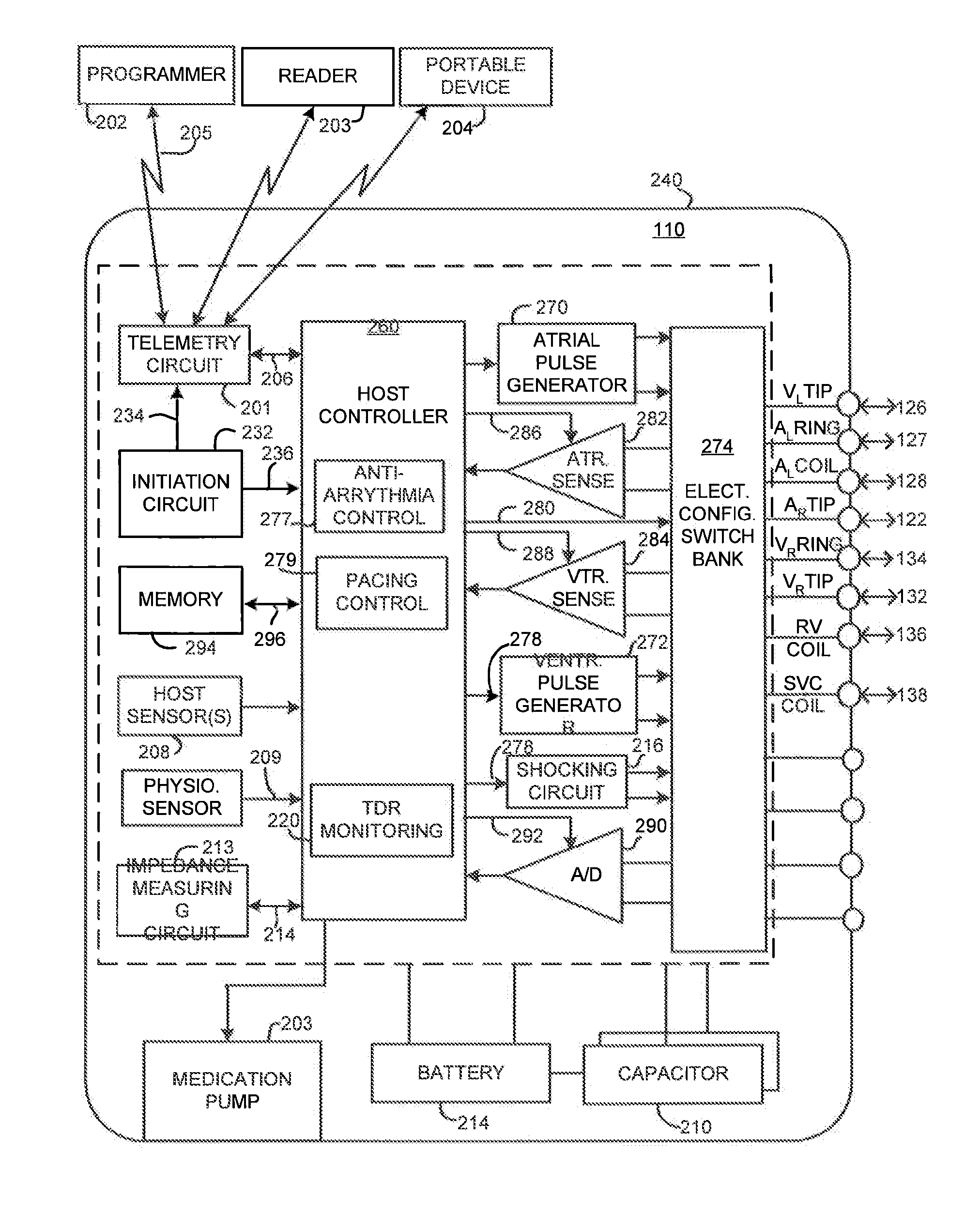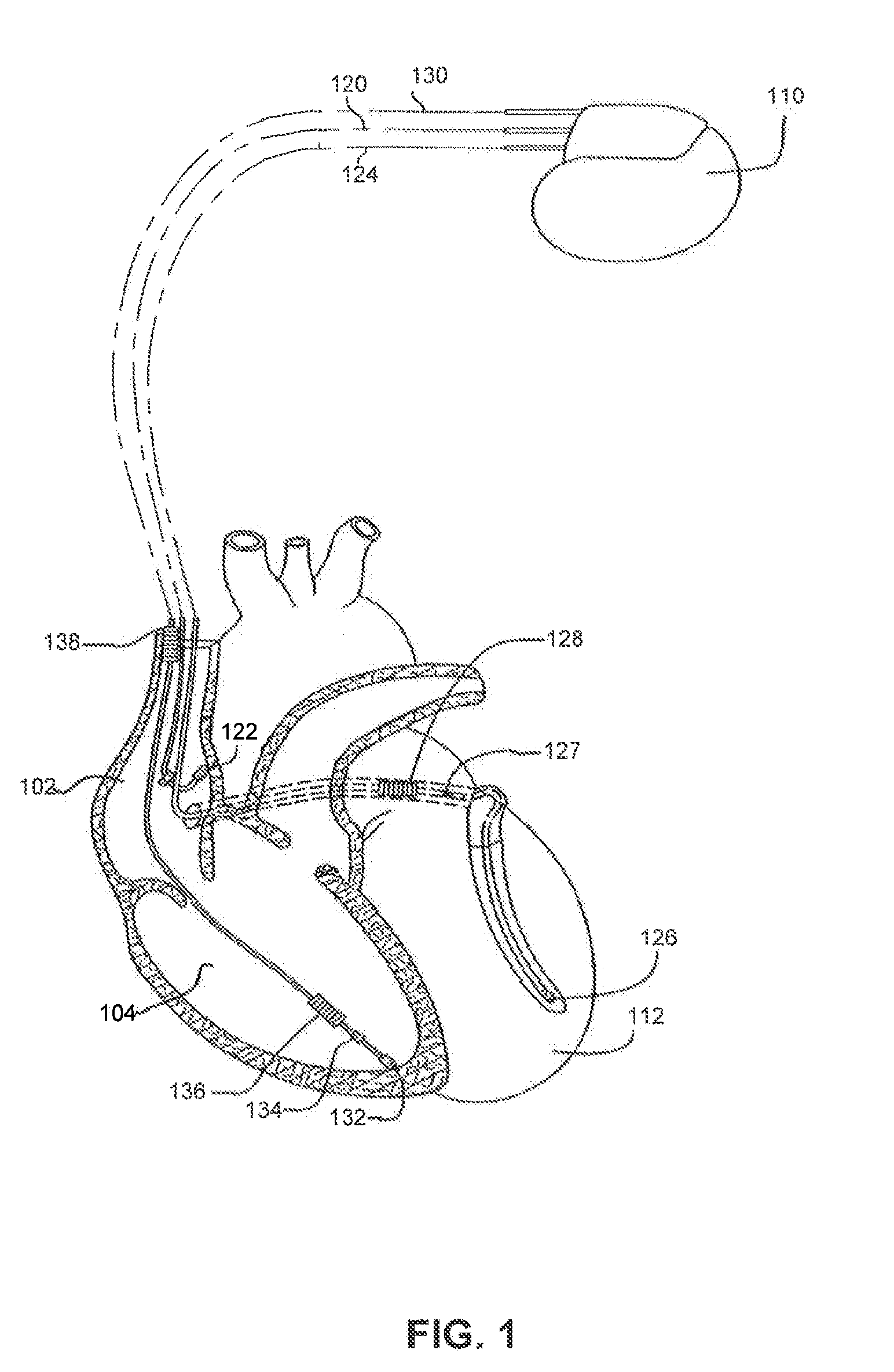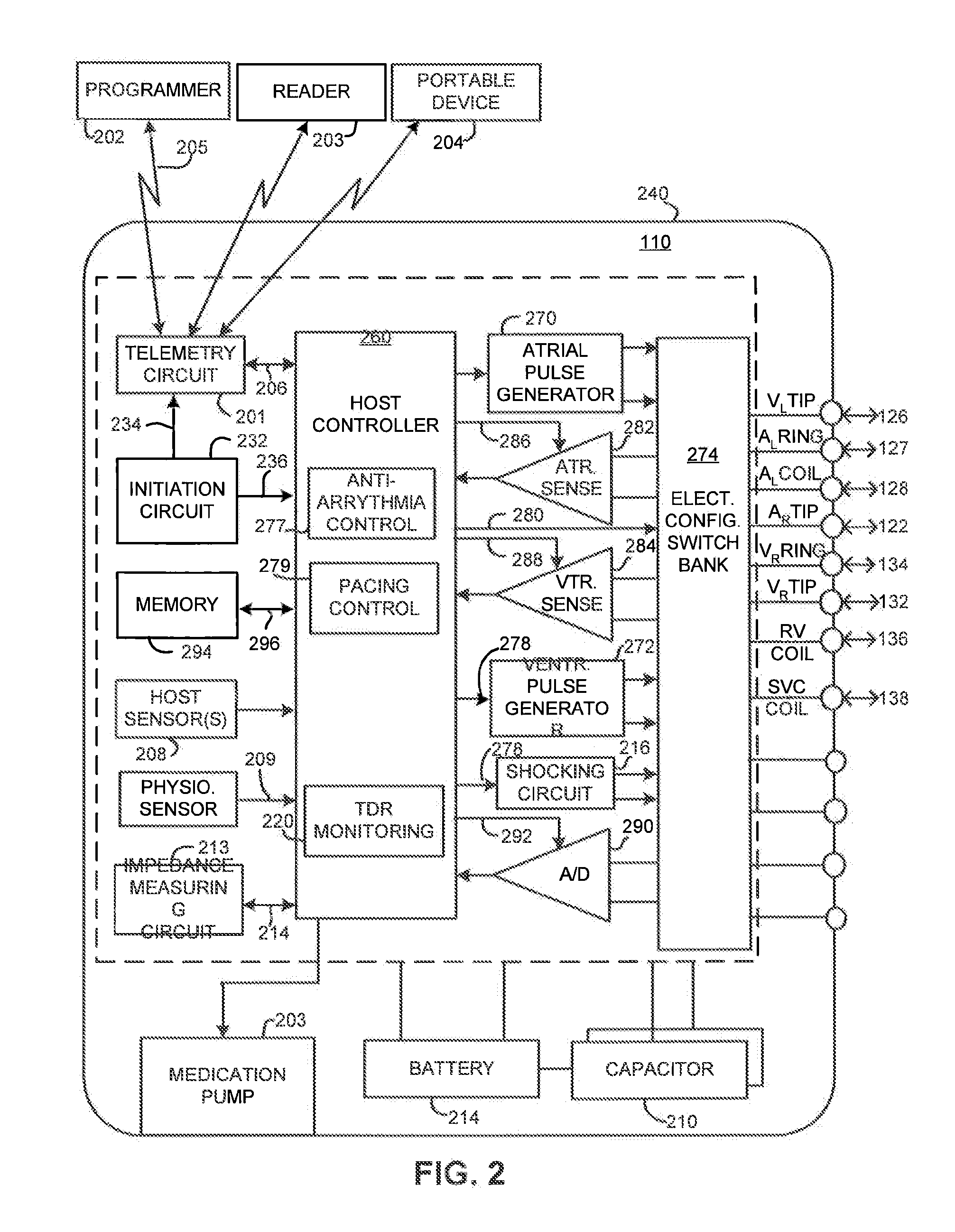Method and Apparatus for Monitoring Arrythmogenic Effects of Medications Using an Implantable Device
a technology of implantable devices and arrythmogenic effects, which is applied in the field of methods and apparatus for monitoring arrythmogenic effects of medications using implantable devices, can solve the problems of ventricular fibrillation, little or no net flow of blood, and fatality, and achieve the effects of reducing and monitoring changes in the risk of arrhythmia
- Summary
- Abstract
- Description
- Claims
- Application Information
AI Technical Summary
Benefits of technology
Problems solved by technology
Method used
Image
Examples
Embodiment Construction
[0025]The following description is of the best modes presently contemplated for practicing various embodiments of the present invention. The description is not to be taken in a limiting sense but is made merely for the purpose of describing the general principles of the invention. The scope of the invention should be ascertained with reference to the claims. In the description of the invention that follows, like numerals or reference designators will be used to refer to like parts or elements throughout. In addition, the first digit of a reference number identifies the drawing in which the reference number first appears.
Implantable Cardiac Stimulation Device
[0026]FIG. 1 illustrates an exemplary cardiac stimulation device 110 in electrical communication with a patient's heart 112 by way of three leads 120, 124 and 130 suitable for sensing cardiac electrogram signals and also delivering multi-chamber stimulation and shock therapy. To sense atrial cardiac signals and to provide right a...
PUM
 Login to View More
Login to View More Abstract
Description
Claims
Application Information
 Login to View More
Login to View More - R&D
- Intellectual Property
- Life Sciences
- Materials
- Tech Scout
- Unparalleled Data Quality
- Higher Quality Content
- 60% Fewer Hallucinations
Browse by: Latest US Patents, China's latest patents, Technical Efficacy Thesaurus, Application Domain, Technology Topic, Popular Technical Reports.
© 2025 PatSnap. All rights reserved.Legal|Privacy policy|Modern Slavery Act Transparency Statement|Sitemap|About US| Contact US: help@patsnap.com



